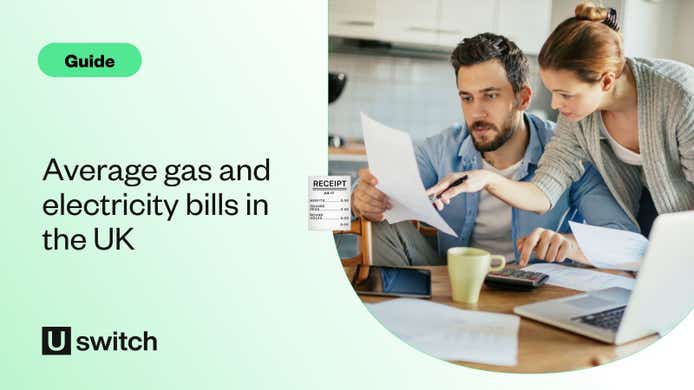How have lightbulbs changed?
Having first been employed extensively in the late 1870s on both sides of the Atlantic, it was inevitable that lightbulbs would be improved upon. The merger of Thomas Edison and Joseph Swan’s competing companies in 1883 created the first mass lightbulb manufacturer, but the incandescent bulbs they made at the time are now largely obsolete. This is due to newer materials that were unavailable at the time, combined with newer technologies and greater understanding of the physics involved.
There have been three generations of low-energy lightbulbs so far - halogen bulbs, compact fluorescent lightbulbs (CFLs) and light emitting diodes (LEDs). Each has improved on the efficiency of the previous one.
Will energy-saving lightbulbs really save me money?
Yes. One of the key reasons why many people have been reluctant to switch to energy-efficient lighting is because they see them as more expensive. Often people base this assessment on the purchase price only, rather than the whole-life cost of a lightbulb. Halogen and incandescent bulbs have to be replaced much more often, and they use five times the electricity of low-energy lightbulbs, which means they actually work out to be very expensive.
As LEDs have become more popular, the costs have come down significantly. At around £5 or less for good quality versions of common bulb types, they soon pay for themselves. According to the Energy Saving Trust, savings will be at least £4 a year per bulb, so the upfront cost can soon be recovered.
Do low energy lightbulbs really make a difference to the environment?
Yes, because they use less energy than incandescent bulbs. A lot of the energy that the old incandescent bulbs used was wasted as heat rather than light, but not so much heat that you could benefit from it. Not only does an LED bulb use less energy, but a much greater proportion goes into light being emitted rather than heat.
Additionally, if they use less energy, this dramatically decreases demand from power plants and therefore lessens greenhouse gas emissions. Their longer lifespan means they won’t end up as landfill as readily as bulbs that last for significantly less time, as they can be recycled easily at a normal recycling station. Finally, in theory, fewer materials are needed to create the bulbs because fewer are needed, though this is obviously difficult to substantiate.
What types of energy-efficient lightbulb are there?
The main type of energy-efficient lightbulb used in the UK today is the LED. It has largely replaced the inefficient halogen and incandescent designs that were formerly the most common types of bulb, and is significantly causing the phase-out of CFLs which were the first energy-efficient bulbs on the market.
LED lighting
LEDs are the most energy-efficient lightbulbs available. If you replaced every bulb in your home with LEDs of the same brightness, you could save around £40 a year on your electricity bill.
Other benefits of LED lights
- They achieve full brightness instantly
- They come in a wide variety of sizes and fittings
- You can get dimmable LEDs
- LED bulbs can typically last for up to 20 years.
Smart lighting
Smart LED bulbs are connected to Wi-Fi, allowing you to control them through an app on your smartphone or with your voice via a smart home assistant like Alexa.
You can set timers, as well as dim, brighten or even change the colour of your bulbs - a great way to change the mood whenever you want. As our homes become ever more connected, this form of energy-efficient lighting is set to grow.
Halogen lightbulbs
Halogen lightbulbs were phased out in 2021, although many homes still have them. While they’re more efficient than the old incandescent lightbulbs on a like-for-like basis, this is often cancelled out because people use more of them.
There has been a trend to place a number of halogen lights in a row along a ceiling. This is partly for design reasons, but also because of the directionality of the light produced, several lights are normally required. The overall energy consumption can therefore be greater.
How does the life of a halogen bulb compare with an LED?
Halogen bulbs typically have a lifespan of 2,000 hours or two years. This is only a fraction of the life of a compact fluorescent bulb, which typically lasts 6-15 years (or 6,000 to 15,000 hours). An LED bulb can last for around 15-20 years.
If you can't replace your halogen lighting, then it’s best to make use of free-standing lighting fitted with energy-efficient bulbs as much as possible.
Why do halogen lightbulbs use so much energy?
Halogen lightbulbs are more efficient than incandescent lightbulbs on a like-for-like basis. But, unfortunately, this is often cancelled out because people use more of them. There has been a trend to place a number of halogen lights in a row along a ceiling, partly for design reasons, but also because of the directionality of the light produced, several lights are normally required. The overall energy consumption can therefore be greater, even though a typical halogen bulb might have a maximum power of 40 watts compared to a 60 or 100-watt incandescent, with the result that your electricity bills may be higher if you have halogen lighting.
Compact fluorescent lightbulbs
Like halogen bulbs, CFLs are also being phased out and are no longer manufactured. They were an early form of low-energy bulb, easily recognisable by their helix-like shape or series of loops.
The move to ban CFLs and halogens is part of a broader plan to make consumer products more sustainable. LEDs are recyclable, making them a better choice for conserving resources and reducing environmental waste.
Linear fluorescent lighting
Linear fluorescent lamps are a source of efficient and effective lighting in homes and industrial spaces - they're not often found in homes apart from potentially in workspaces like kitchens and garages. They're efficient and quick to light up but emit a harsher light that you don't want in most areas of the home, so they're not used that often.
How long does linear fluorescent lighting last?
Fluorescent tubes do have a limited life, although this will be several years. If there are signs of flicker, or a tube looks as though it has failed, it is worth checking if you need a replacement 'starter' before you consider replacing the tube. A starter is a small cylinder with two small T-shaped pins protruding from one end. It is mounted in a socket on the side of the lamp housing - it may not be immediately obvious, as it does not protrude much, and its end surface is only about the size of a penny. Starters only cost a couple of pounds and it is always worth keeping a spare one.
How can I use my low energy lightbulbs efficiently?
While investing in energy-efficient lightbulbs is a great first step, there are various ways in which you can make sure you’re using your lights efficiently when they’re on.
- Make sure you turn the lights off when you leave the room, unless you’re coming back
- Only turn on the lights you need - for example, you probably don’t need to have both the overhead lights and the lamps on
- Put external lights on a timer or a motion sensor, so they’re only on when they’re needed.
Ultimately, lightbulbs are only one step towards ensuring that your life is as energy-efficient as possible - there are a huge number of things you can do to save energy in all areas of your life, as you can see here. However, when you consider the ease with which you can switch your poorly performing lightbulbs for long-lasting, energy-efficient options and the overall effect they’ll have on your bill, this is by far the best (and quickest) place for you to start.
Energy-saving tips for lights and lamps
There are various ways you can make sure you’re using your lights as efficiently as possible:
- Only turn the lights on if you have to. Daylight is the most energy-efficient form of light.
- Turn off lights when you leave a room, unless you’re going back within a few minutes.
- Choose LEDs where possible.
- Put external lights on a timer or a motion sensor, so they’re only on when they’re needed.
- Install low-energy bulbs with the correct light output. To match the output you had with traditional lighting, simply divide by five to calculate the low-energy equivalent.
- Invest in smart bulbs that you can control remotely from your smartphone.
- Start to think of lightbulbs as one-off purchases that last many years, like a lamp itself, rather than something you simply throw away after a short time.
Ultimately, lightbulbs are only one step towards ensuring that your life is as energy-efficient as possible. There are a huge number of other things you can do to save electricity in all areas of your life, as you can see in our 100+ energy saving tips.



